Mesopotamia, also known around the world as the Cradle of Civilization, is located in the fertile crescent. This area today is known as Iraq and the western parts of Iran. The Mesopotamians harnessed the great Tigris and Euphrates Rivers flowing out of the Zagros Mountains in the east, creating a sizeable civilized farming community. They invented the wheel, controlled floods, constructed irrigation canals to exploit the water for their city needs, and had a written language called Cuneiform.
Mesopotamia was not a united area like Egypt but played host to several civilizations. One of the most significant civilizations was the Sumerians, who lived in the southern region near the mouth of the Persian Gulf. Multiple gods represented by Sumerian rulers controlled daily life in the independent city-states.
The most significant natural resource in Mesopotamia was the land located between the two large rivers and the water from those rivers, providing the opportunity to grow bountiful crops of staple foods such as barley, sesame seeds, and dates. Because the area lacked wood from forests, minerals, or natural stone, the Mesopotamians made mud bricks from the soil in the fertile valley. Some of the massive ziggurats made from mud bricks still stand today, 5,000 years old.
Mesopotamians were known for building giant ziggurats, including the Ziggurat of Ur (3.18), the best-preserved temple built by King Ur-Nammu. The temple was a massive step-shaped pyramid almost 30 meters tall, located in the center of town and used for administration as well as a shrine to the moon god, Nanna. The construction used mass-produced mud bricks, each weighing almost fifteen kilograms, to build the solid core of the base. The exterior facings of the bricks were frequently glazed and engraved with astrological symbols and names of the kings. The ziggurat is slightly pyramid-shaped at the lower portion; however, the top section is flat with multiple layers of terraces decorated with trees.
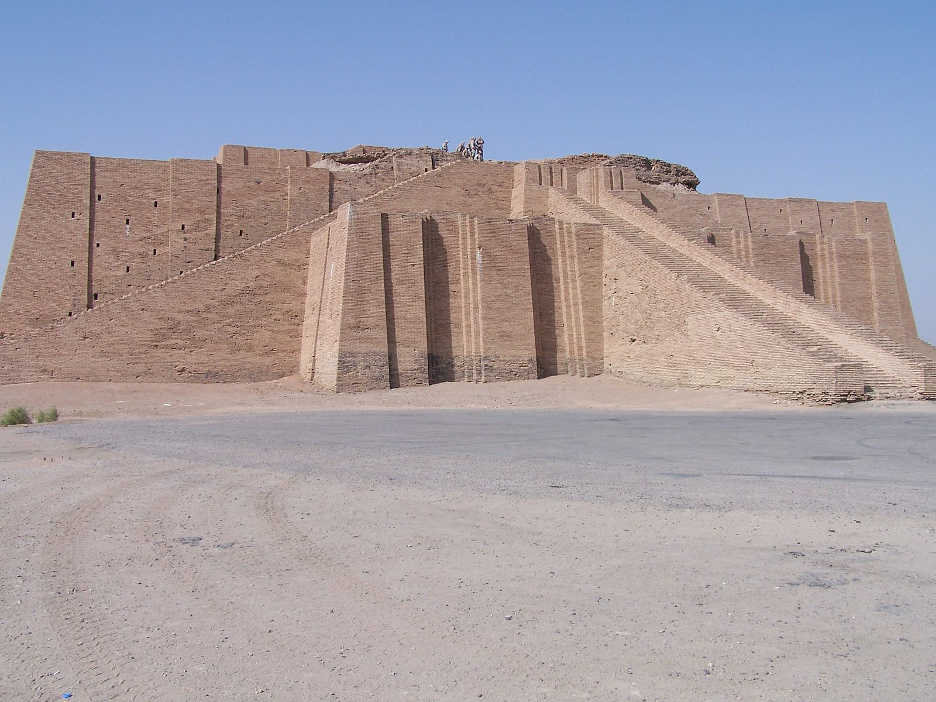
3.18 Ziggurat of Ur
The crumbling remains of the White Temple Ziggurat were finished in 3000 BCE using only mud bricks. The Sumerian city of Uruk would have placed the ziggurat in the heart of the city with a population of 40,000 people, and the entire city built out of mud bricks with ziggurats towering into the sky. Although the building materials were considered fragile, the Sumerians erected the large temples that survived for thousands of years.
Cuneiform was developed as the standard written language of the area and is one of the earliest known writings. The Mesopotamians used a specially shaped reed stylus and stamped into the wet clay tablet to record information. Cuneiform began as symbols or pictographs and evolved into writing. Archeologists have unearthed over one million of the six-inch thick slabs of clay tablets used every day to record events or as receipts by merchants, for example, how much beer allocated to different groups (3.19). Around 3,000 BCE, the writing became more organized and evolved to be read from left to right and bottom to top. The clay tablets sometimes fired to make permanent records merchants would retain, or the soft, malleable clay reused for everyday writing.
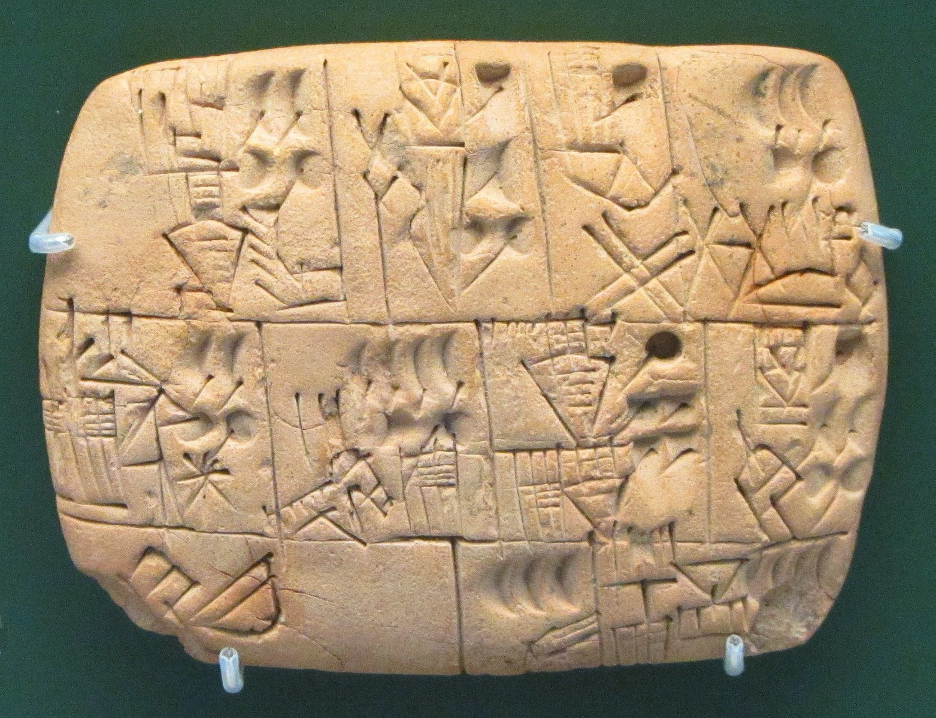
3.19 Beer allocation
Constructed of wood with red limestone, lapis lazuli, and shells, the Standard of Ur is from one of the royal tombs. The trapezoidal box has two sides, one of the oldest pictorial narratives ever discovered. The box on each side is divided into three sections and read left to right and top to bottom, depicting a story about the king. The artist has incorporated all the figures on a single plane; however, the king is significantly bigger than the other people, denoting his importance. One side of the box (3.20) depicts the triumph over an unknown enemy, depicting a variety of soldiers and captives. The second side (3.21) displays the stability of peace, banquets, and celebrations. This exquisite piece of pictorial art became the standard format of cuneiform over 2000 years.
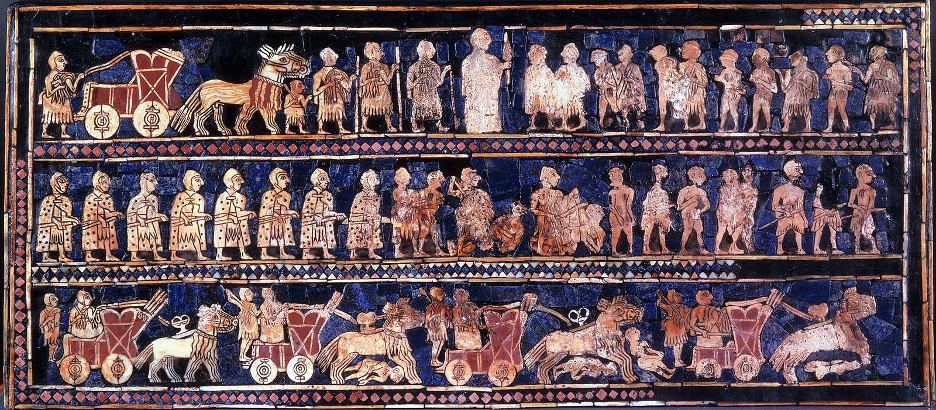
3.20 Standard of Ur in War
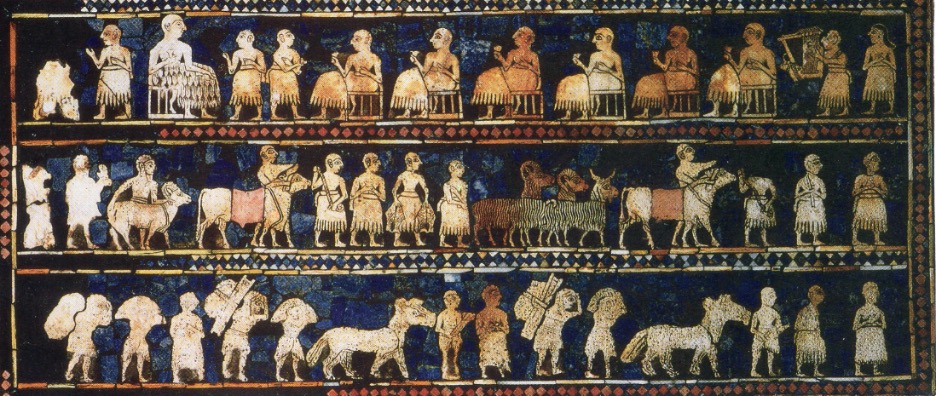
3.21 Standard of Ur in Peace
Discovered beneath the floor of the Temple Eshnunna, were statues (3.22), over seventy-five centimeters high and beautifully carved from gypsum, inlaid with black limestone and seashells. The statues represented the people of Mesopotamia and demonstrated the type of clothing worn. Men wore long, fringed skirts with belts that presumably held the skirt cinched around the waist, and women wore long flowing robes with bare shoulders and long hair. The statues are perfectly balanced, standing erect on small platforms, both figures appear to be looking skyward, possibly praying as their hands are clasped together in front at chest height.
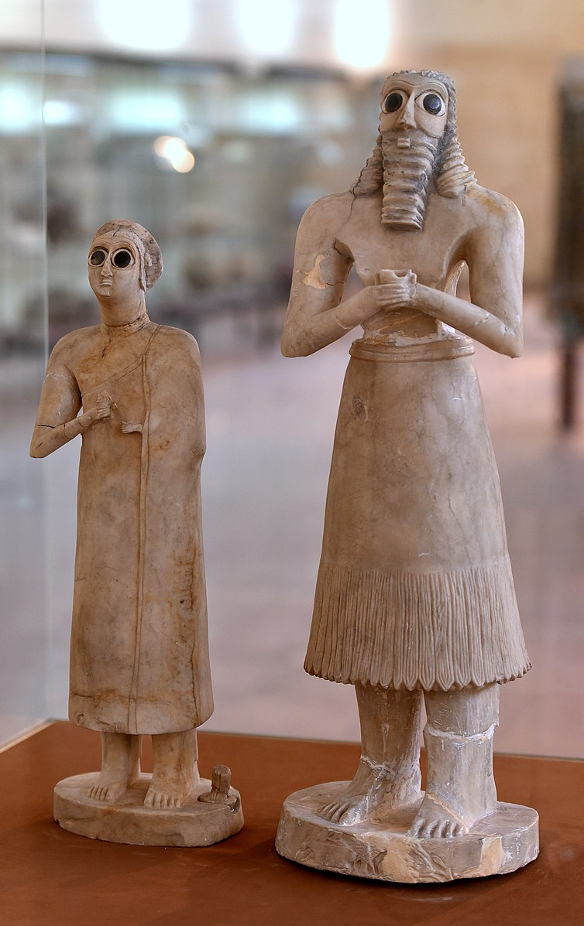
3.22 Temple of Eshnunna statue
The Akkadians, a tribe of Bedouin people from the Arabian Desert, began to surface in southern Mesopotamia around 2400 BCE. Initially, they blended into the Sumerian culture, even adopting the same deities; finally, the Akkadians increasingly replaced the Sumerian government and language, taking control of the Mesopotamian valley. Over time, the political power of the Akkadian Empire rose to control the region.
One of the significant surviving artifacts from the Akkadians is the Stele of Naram-Sin (3.23), representing the Akkadian king defeating a tribe of people from the Zagros Mountains. As a common practice, the hierarchy clearly shows the king almost twice as tall as the soldiers. The stele is nearly one meter high and carved in low relief.

3.23 Stele of Naram-Sin








